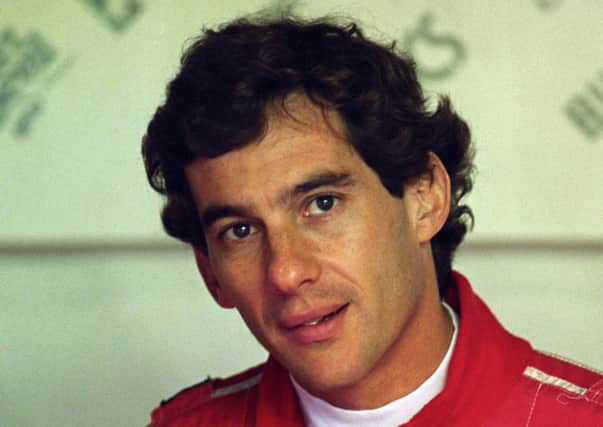Death of Ayrton Senna still so raw 20 years on


Current and past F1 drivers, mechanics, racing officials and fans will pay their respects to Senna and Austrian driver Roland Ratzenberger, who also died at the 1994 San Marino Grand Prix.
“When I was a kid I had all the books, all the videos, (Senna) was the driver I looked up to, way before I even started racing,” Mercedes driver Lewis Hamilton said shortly before winning the Chinese Grand Prix eight days ago. “He kind of inspired me to even be a driver.”
Advertisement
Hide AdAdvertisement
Hide AdHamilton was just nine at the time of Senna’s death. “It was very difficult for several days to really (accept) your hero’s gone,” the British driver said.
Senna was a hero to many and is often voted as the greatest F1 driver in history. He won three Formula 1 titles in 1988, 1990 and 1991 – all with McLaren. He moved to the Williams team for his tragic 1994 season. Despite his career being cut short when he was 34, his 41 wins stand third all-time behind Michael Schumacher’s 91 and rival Alain Prost’s 51. Beyond the numbers, Senna attracted legions of followers for his humbleness and strong Catholic faith.
“He was loved to an unbelievable degree,” said Mauro Forghieri, a former car designer for Ferrari and other F1 teams, who was called on as an expert witness in the court trial following Senna’s death.
Forghieri recounted how when Senna’s coffin was transported back to his native Brazil, it wasn’t put in the airplane’s luggage hold but rather placed over three rows of the first-class cabin. “Of course the airline and the pilot were Brazilian,” Forghieri recalled. “He was considered much more important than a president.”
The Brazilian government declared three days of national mourning for Senna and an estimated three million people lined the streets as his coffin was driven into his hometown of Sao Paulo. For anyone watching, the 1994 San Marino GP was truly a disaster. Senna died after crashing into a concrete wall at about 300 kph (186 mph) in Sunday’s race. Another high-speed crash in Saturday’s qualifying killed Ratzenberger, a rookie, and on Friday, the car of Rubens Barrichello went airborne crashing against the barriers before flipping. The young Brazilian sustained concussion and amnesia and called his survival a miracle.
Senna had been shocked by Ratzenberger’s death and refused to complete qualifying on Saturday. On the Sunday, shortly after the race restarted following five laps at slow speed behind the pace car after another crash that injured four spectators, Senna’s Williams Renault car went straight through the Tamburello turn, a spot with a history of bad accidents.
Senna was transported to a hospital in nearby Bologna and was declared dead four hours later.
“For the people who were there and experienced them, they were three days that will never be forgotten,” Forghieri said.
Advertisement
Hide AdAdvertisement
Hide AdThe Italian judicial system debated the cause of Senna’s death for more than ten years, with a probe that led to manslaughter charges against the Williams team’s technical director, Patrick Head, and former designer Adrian Newey, for a faulty steering column. They were cleared when the statute of limitations had run out.